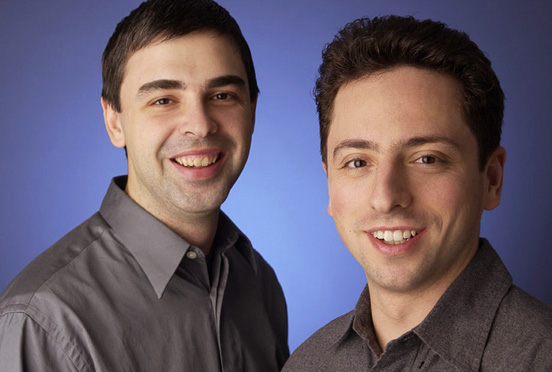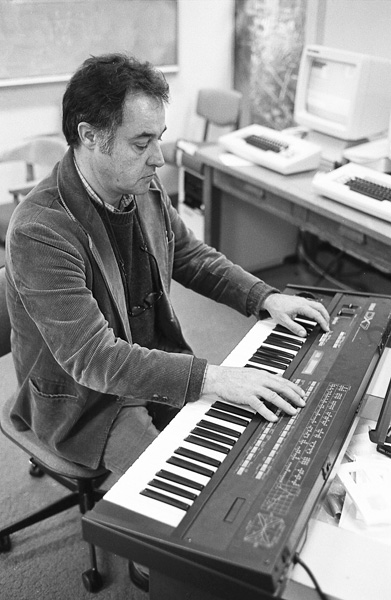Office of Technology Licensing celebrates 40 years and 8,000 inventions
In what may be the highest concentration of innovators anywhere, hundreds of inventors, licensees and venture capitalists will gather Friday to celebrate the 40th anniversary of the office that transfers Stanford technology to industry.
The Office of Technology Licensing (OTL) will celebrate 40 years, 8,000 inventions and about $1.3 billion in royalties earned for Stanford with an invitation-only anniversary event on Friday, April 30.
Katharine Ku, director of OTL, says 400 inventors, licensees, venture capitalists and others are expected to attend the office's 40th anniversary party. Among those scheduled to speak are Provost John Etchemendy; Daria Mochly-Rosen, senior associate dean for research in the School of Medicine; Uday Kumar, founder and chief medical officer of iRhythm; Noel Warner, vice president for scientific affairs of BD Biosciences at Becton, Dickinson and Co.; Brook Byers, partner of Kleiner Perkins Caufield & Byers; and Ann Arvin, vice provost and dean of research.
Ku says the event is designed to celebrate Stanford inventors and to say thank you to the licensees and venture capitalists who have made OTL successful. Ku says she expects the gathering to feature the "highest concentration of innovators you will find anywhere."
8,000 inventions
Google, the search engine invented by Larry Page and Sergey Brin when they were Stanford graduate students, is the most financially successful invention licensed by OTL, Ku says. In 1998, Stanford licensed the PageRank algorithm to the startup, which went public in 2004.
Other inventions, however, have been equally important when applied to such specific areas as music, health and biotechnology. Among the most prominent of the 8,000 inventions licensed by OTL, Ku cited:
- The Fluorescent Activated Cell Sorter (FACS), developed in the laboratory of Leonard Herzenberg, professor emeritus of genetics. The technology was licensed to a then brand-new division of Becton Dickinson. FACS is an analytical tool in biomedical research.
- The FM sound synthesis chips invented by John Chowning, the Osgood Hooker Professor of Fine Arts, Emeritus, which were licensed to Yamaha Corp. and became the standard for sound chips. They are used for ringtones in many cell phones today.
- The DNA cloning technology invented by Stanley Cohen, the Kwoh-Ting Li Professor in the School of Medicine, and Herbert Boyer, professor emeritus of biochemistry at the University of California-San Francisco. Licensed to more than 450 companies, this technology is used to make such drugs as human growth hormone, erythropoietin and insulin.
- Chip-sets for Digital Subscriber Line (DSL) technology, developed in the 1990s by John Cioffi, the Hitachi America Professor in the School of Engineering, Emeritus. The technology is sold worldwide by Texas Instruments and others.
- A process invented by Herzenberg, Vernon Oi and Sherie Morrison for making antibodies, now used to make drugs such as Remicade for arthritis and other immune ailments, ReoPro for cardiac problems, Stelara for psoriasis, Synagis for respiratory syncytial virus, Tysabri for multiple sclerosis and Erbitux for colorectal cancer.
- The "Stanford Chronic Disease Self-Management Program," invented by Kate Lorig, research professor emerita of medicine, that has been licensed to more than 1,000 organizations worldwide.

The search engine at the heart of Google, which was invented by Larry Page and Sergey Brin when they were Stanford graduate students, is the most financially successful invention licensed by OTL.
Part of the culture
"OTL has become clearly established in the culture of Stanford, and I hope we continue to add value," said Ku. "We've been helping Stanford meet its mission for 40 years by setting up a process through which Stanford inventions can be offered to industry. We're not the only way technology is transferred from Stanford, but we definitely are an important way."
Ku describes the more than 30 staff members of the office, located on El Camino Real, as "science junkies." They translate sometimes esoteric research into proposals that companies can evaluate for possible transfer to industry.
"Most of the ideas we see are in a very early stage," she says. "For someone just reading the scientific paper, they may not see the potential of the invention. So our job is to take all those bright ideas and pitch them to industry in a way that makes them accessible."
Established in 1970
OTL was established in August 1970 after a yearlong pilot project. Income in the pilot year with one part-time employee was $55,000, according to A Chronology of Stanford University and its Founders, published by the Stanford Historical Society.
Today, OTL receives some 400 invention disclosures annually from Stanford faculty, staff and students. The disclosures are evaluated for commercial possibilities and, when possible, licensed to industry. If the inventions are successful, cash royalties are collected by OTL and shared among inventors and their departments and schools. Since 1970, 5,198 U.S. patents have been filed and 1,934 issued. OTL has issued 2,877 licenses.
During the last full fiscal year, 2008-09, OTL received more than $65 million in gross royalty revenue from 517 technologies. Thirty-nine of the inventions generated $100,000 or more in royalties, and OTL concluded 77 new licenses.


Share This Story